Sanatana Dharma #4) Brahma - The Creator
Brahma
• The first of the Trimurti.
• He is the creator.
• He has four heads and four faces and four arms.
• He is often pictured holding a holy scripture.
• Lord of sacrifices.
• His consort is saraswati, goddess of wisdom music, arts, and speech.
• Originated as a river goddess. Her name is Sanskrit for "she who has lakes or pools."
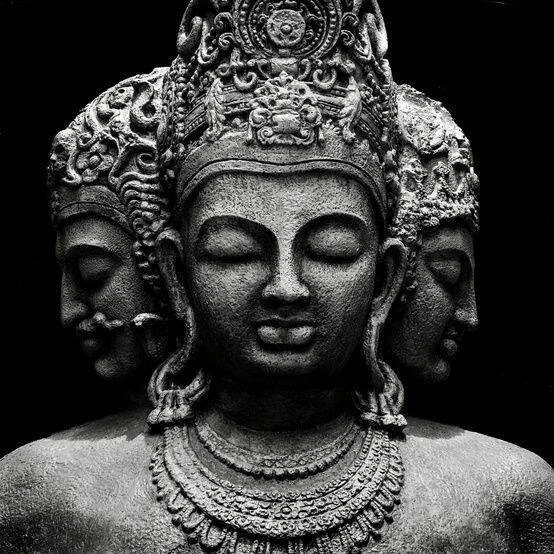
Brahma is the Hindu Creator god. He is also known as the Grandfather and as a later equivalent of Prajapati, the primeval first god. In early Hindu sources such as the Mahabharata, Brahma is supreme in the triad of great Hindu gods which includes Shiva and Vishnu.
Brahma, due to his elevated status, is less involved in picturesque myths where gods take on human form and character, but is rather a generally abstract or metaphysical ideal of a great god. In later Puranas (Hindu epics) Brahma is no longer worshipped and other gods are assigned his myths, even if he always maintains his status as the Creator god. Brahma's epithet is ekahamsa, the One Swan. His vahanam (vehicle) swan, goose or peacock. He is still honoured today with an annual ceremony at the pilgrimage site of Pushkar in Rajasthan, India and he remains a popular figure in South-east Asia, especially in Bali and Thailand. 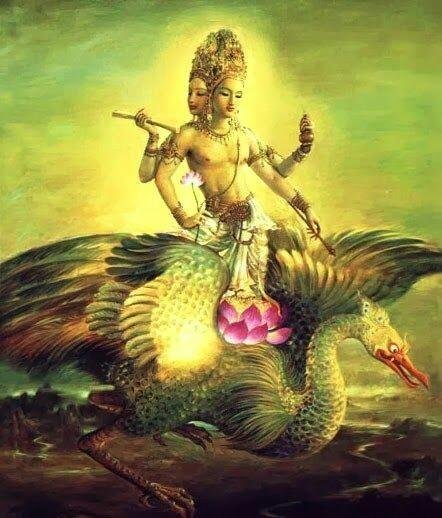
BRAHMA - THE CREATOR
In the beginning, Brahma sprang from the cosmic golden egg and then he created light & dark and good & evil from his own person. He also created the four types: gods, demons, ancestors, and men (the first being Manu). Brahma then made all living creatures upon the earth (although in some myths Brahma's son Daksa is responsible for this). In the process of creating, perhaps in a moment of distraction, the demons were born from Brahma's thigh and so he abandoned his own body which then became Night. After Brahma created good gods he abandoned his body once again, which then became Day, hence demons gain the ascendancy at night and gods, the forces of goodness, rule the day. Brahma then created ancestors and men, each time again abandoning his body so that they became Dusk and Dawn respectively. This process of creation repeats itself in every aeon. Brahma then appointed Shiva to rule over humanity.
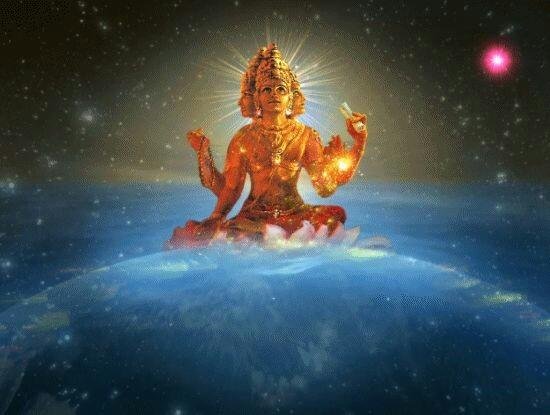
Brahma had several wives, the most important being his daughter Sarasvati who, after the Creation, bore Brahma the four Vedas (Holy books of Hinduism), all branches of knowledge, the 36 Raginis and 6 Ragas of music, ideas such as Memory and Victory, speech, religious acts, yogas, Sanskrit and the various units of measurement and time. Besides Daksa, Brahma had other notable sons including the Seven Sages (including Daksha), and the four famous Prajapatis (deities): Kardama, Pancasikha, Vodhu, and Narada, the latter being the messenger between gods and men.
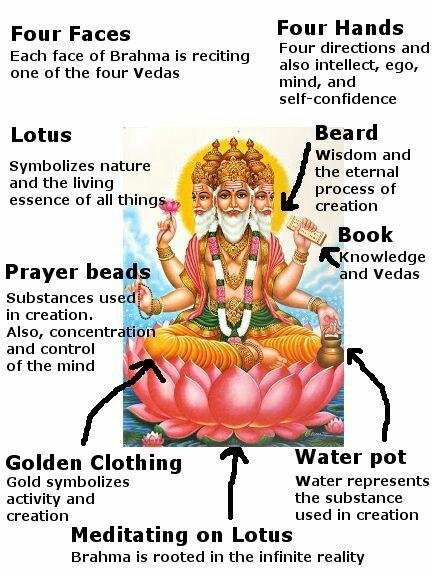
BRAHMA CREATES WOMEN & DEATH
In the myths told in the Mahabharata, Brahma created women, the source of evil amongst men: The gods feared that men could become so powerful that they might challenge their reign, therefore, they asked Brahma how best to prevent this. His response was to create wanton women who 'lusting for sensual pleasures, began to stir men up. Then the lord of gods, the lord, created anger as the assistant of desire, and all creatures, falling into the power of desire and anger, began to be attached to women.'
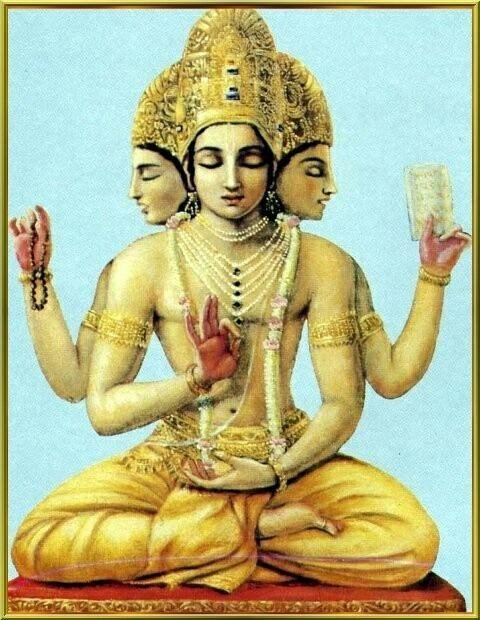
In another myth Brahma's first female is also Death, the evil force which brings balance to the universe and which ensures there is no over-crowding of it. The figure of Death is picturesquely described in the Mahabharata as 'a dark woman, wearing red garments, with red eyes and red palms and soles, adorned with divine ear-rings and ornaments' and she is given the job of 'destroying all creatures, imbeciles and scholars' without exception (Mahabharata in Hindu Mythologys, 40). Death wept and begged Brahma to be released from this terrible task but Brahma remained unmoved and sent her on her way to perform her duty. At first Death continued her protests by performing various extraordinary acts of asceticism such as standing in water in complete silence for 8,000 years and standing on one toe on the top of the Himalaya mountains for 8,000 million years but Brahma would not be swayed. So Death, still sobbing, performed her duties bringing endless night to all things when their time came and her tears fell to the earth and became diseases. Thus, through Death's work, the distinction between mortals and gods was preserved forever.
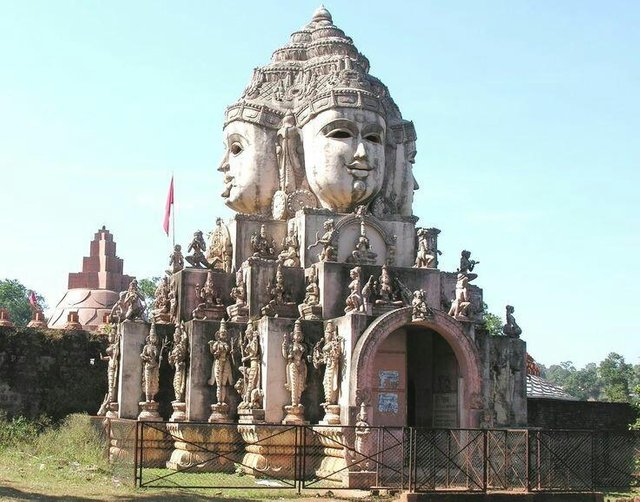
If you like this post please Follow, Upvote, and Resteem

